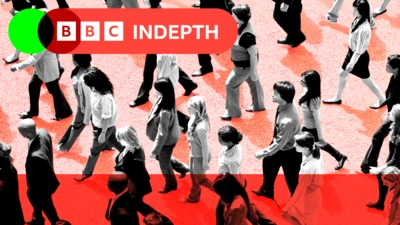We've updated our Privacy and Cookies Policy
We've made some important changes to our Privacy and Cookies Policy and we want you to know what this means for you and your data.
Gay rights map: Notes on the data
The ΒιΆΉΤΌΕΔ News website's gay rights map and timeline, built with the help of the , attempt to explain the legal status of same-sex relationships across UN member states.
Here are some background notes on the data.
The map
The map shows the broad legal status of gay people living in UN member states, according to data provided by the UN's human right's office, who built on information from the .
Countries have been categorised by their most progressive or regressive laws, apart from where laws are contradictory. These countries have been coloured purple.
Countries where gay rights vary between states have been coloured by their most progressive or regressive law, but they also have a note in the rollover text where available. For example, in the US, there are different marriage rights in different states.
The map does not reflect day-to-day experiences of lesbian, gay, bisexual and trans and intersex people. In many places where anti-discrimination laws exist, gay people continue to be persecuted by state authorities and wider society.
The timeline
The timeline, pulled together by the UN, uses 1789 - the date of the French Revolution - as its starting point. It was chosen by the UN as a baseline, as it was a time when homosexuality was criminalised in many countries.
However, there are many places where there is no certain date for when same-sex relationships were criminalised, and others where there are no explicit laws that outlaw homosexuality, but where laws are used as if they did.
Many countries have never criminalised same-sex sexual conduct, such as Burkina Faso, Central African Republic, Chad, Congo, Ivory Coast, Democratic Republic of Congo, Gabon, Madagascar, Mali, Niger and Rwanda. In other cases, such as China, it is uncertain if same-sex relationships were ever criminalised.
As is the case with a number of states with regional autonomy, different parts of the UK and its territories decriminalised same-sex relations at different times: England & Wales (1967), Northern Ireland (1982), Scotland (1981), Akrotiri & Dhekelia (2000), Anguilla (2001), Bailiwick of Guernsey (1983), Bermuda (1994), British Virgin Islands (2001), Cayman Islands (2001), Falkland Islands (1989), Gibraltar (1993), Isle of Man (1992), Jersey (1990), Montserrat (2001), Pitcairn, South Georgia, St Helena, Turks & Caicos Islands (2001) and all other territories.
The same is the case for Australia: New South Wales (1983), Norfolk Island (1993), Northern Territory (1984), Queensland (1991), South Australia (1972), Tasmania (1997), Victoria (1981), Western Australia (1990).
In the US, homosexuality was decriminalised by Supreme Court verdict in 2003. Before this the following states decriminalised independently: Alaska (1980), Arizona (2001), Arkansas (2002), California (1976), Colorado (1972), Connecticut (1971), Delaware (1973), Georgia (1998), Hawaii (1973), Illinois (1962), Indiana (1977), Iowa (1977), Kentucky (1992), Maine (1976), Minnesota (2001), Montana (1997), Nebraska (1978), Nevada (1993), New Hampshire (1975), New Jersey (1979), New Mexico (1975), New York (1980/2001), North Dakota (1975), Ohio (1974), Oregon (1972), Pennsylvania (1980/1995), Rhode Island (1998), South Dakota (1977), Tennessee (1996), Vermont (1977), Washington (1976), West Virginia (1976), Wisconsin (1983), Wyoming (1977), District of Columbia (1993). Associates: American Samoa (1980), American Virgin Islands (1985), Guam (1978), Northern Mariana Islands (1983). Formal repeal of criminalizing law after 2003: Puerto Rico (2005), Missouri (2006).
In the timeline, where possible, former colonies have been referenced by their current name.
For more information visit the UN's site or the .
Top Stories
More to explore
Most read
Content is not available








